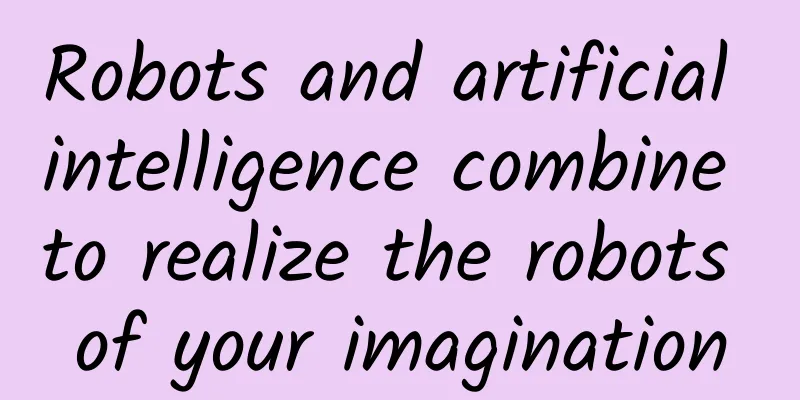What technologies will Toyota popularize in the next few years?

|
Five years ago, the automotive industry was discussing the popularization of direct injection technology. Three years ago, everyone was discussing car networking. In the past two years, everyone has been focusing on new energy. So what about the next few years? At the "Toyota Technology Space" technology experience event held on December 7, Toyota said that it would popularize these technologies in the next few years - popularization means that these currently relatively high-end technologies will be installed on entry-level products. Toyota Safety Sense Toyota Safety Sense, a smart driving safety system launched by Toyota, actually includes four functions, including Pre-Collision Safety System (PCS), Lane Departure Alert (LDA), Automatic High Beam (AHB), and Dynamic Radar Cruise Control (DRCC). Although the name has obvious Toyota characteristics, we are not unfamiliar with its functions, and we can understand each function from the name. The "Pre-Collision Safety System" (PCS) monitors the vehicle's operating status and the situation of obstacles ahead in real time. When there is a risk of collision, the system will first issue an audible warning to the driver. If the driver does not respond in time, the system will brake at full speed to avoid a collision or reduce the intensity of the collision. According to Toyota, when the relative speed between the vehicle and the obstacle is less than 30km/h, PCS can completely avoid rear-end collisions; and when the speed difference is greater than 30km/h, PCS can reduce the intensity of the collision by decelerating. The "Lane Departure Warning System" (LDA) uses a camera to identify road marking lines when the vehicle speed is within the range of 50-180km/h. When the vehicle crosses the line, the system will issue a sound to alert the driver, and the steering wheel will have a slight reverse force to help the vehicle return to the lane. The "Dynamic Radar Cruise Control System" (DRCC) uses millimeter-wave radar and a SLR camera to automatically and dynamically control the vehicle's speed based on the speed of the vehicle in front and the driver's settings, thereby reducing driving fatigue at high speeds. The "Automatic High Beam System" (AHB) detects road conditions through a camera. When there are no street lights on the road at night and no vehicle lights ahead, the system will automatically turn on the high beam to increase driving safety. When vehicle lights appear ahead, the system will automatically turn off the high beam to prevent the high beam from interfering with other vehicle drivers. In fact, these systems and functions are not the "most advanced" in the current automobile market, such as the applicable speed range, lane keeping ability, etc. Toyota does not deny this. In fact, Toyota's laboratories and high-end Lexus models under the group are equipped with the world's top-notch technologies. However, in Toyota's view, these high-end technologies are not suitable for popularization in entry-level products with affordable prices from a cost perspective. Therefore, the large-scale promotion of the Toyota Safety Sense intelligent driving safety system, which is not the most advanced in functionality but has a lower cost, on entry-level models will help improve the overall vehicle safety of society, and its social significance is self-evident. For this reason, Toyota organized such an experience meeting to show the media and the public these technologies that are expected to be widely popularized. It is understood that Toyota plans to gradually mass-produce them starting this year, such as the new Rav4 Rongfang model, and promote them to entry-level products as soon as possible. However, compared with the Toyota Safety Sense intelligent driving safety system which is still on the popularization schedule, Toyota's small-displacement turbo direct injection supercharged engines are obviously much more popular. D-4T small supercharged engine In the current global context of energy conservation and emission reduction, Toyota is also actively promoting the "Dual Engine" hybrid technology and developing alternative energy (hydrogen fuel cells). However, in addition to this, in terms of "energy conservation", Toyota obviously believes that the improvement of traditional engines in the short term is still very important. To this end, since 2014, Toyota has successively launched 14 "high thermal efficiency and low fuel consumption engines" into the market, forming a high thermal efficiency and low fuel consumption engine group. Today, at Toyota's technical experience meeting, we experienced one of the small-displacement direct injection turbocharged engines - the D-4T engine. The power level of this engine is equivalent to that of a 1.8L naturally aspirated engine. It is because of the use of direct injection and supercharging technology that the thermal efficiency of the engine reaches an astonishing 36%, while reducing the fuel consumption per 100 kilometers to 5.4L. The use of direct injection technology makes the oil and gas mix more evenly and the combustion more complete. At the same time, the gasification of gasoline during injection reduces the cylinder temperature. Don't underestimate the fuel consumption of 5.4L/100km. This fuel consumption is not only achieved by direct injection technology, but also by variable valve timing technology, which enables the engine to realize Atkinson cycle and further improve fuel consumption. At the same time, a bypass valve is added between the exhaust valve and the turbocharger, which can be opened at low speed to allow exhaust gas to pass through the turbocharger, reducing the turbine effect and thus improving fuel consumption; the application of engine start-stop technology can effectively reduce fuel consumption by about 5%. In addition to better fuel consumption, Toyota has also solved some common reliability issues on direct injection engines. For example, direct injection engines may have carbon deposits, oil burning, and blowby during use. Specifically, through the forced ventilation system of blowby, the blowby can be guided to the intake chamber in time to avoid chemical reaction between blowby and oil and deterioration, and achieve the same oil change cycle for supercharged engines and naturally aspirated engines. Through water cooling and oil cooling, the supercharger is cooled more effectively to reduce the thermal degradation of the oil; the oil return path is cooled to effectively reduce the oil temperature, which also reduces the thermal degradation of the oil; by integrating the exhaust manifold in the cylinder head, the cooling efficiency of the coolant on the exhaust gas is improved, the exhaust gas temperature is reduced, and the reliability of the exhaust system such as the turbocharger, sensor and three-way catalytic converter is ensured, etc. At the experience meeting held by Toyota, we experienced the above technologies in real cars, and even experienced high-risk projects such as PCS "Pre-Collision Safety System" with real people, and the performance of Toyota products was quite satisfactory. Obviously, if the above technologies can be popularized in Toyota's millions of entry-level products each year in the next few years, the safety of life and property of Chinese consumers and traffic participants will be greatly improved, which only makes us look forward to the full mass production of these technologies. As a winner of Toutiao's Qingyun Plan and Baijiahao's Bai+ Plan, the 2019 Baidu Digital Author of the Year, the Baijiahao's Most Popular Author in the Technology Field, the 2019 Sogou Technology and Culture Author, and the 2021 Baijiahao Quarterly Influential Creator, he has won many awards, including the 2013 Sohu Best Industry Media Person, the 2015 China New Media Entrepreneurship Competition Beijing Third Place, the 2015 Guangmang Experience Award, the 2015 China New Media Entrepreneurship Competition Finals Third Place, and the 2018 Baidu Dynamic Annual Powerful Celebrity. |
<<: BMW 5 Series M Performance Edition official pictures released, debut early next year
>>: The latest news about Volkswagen Beetle is based on the MQB platform
Recommend
Wired: Smartwatches are not the future of wearable devices
Wired writer Mat Honan believes that wearable dev...
Fifteen measures for safe production! What are the specific measures? Why were the fifteen measures introduced? Details attached!
On April 10, 2022, the State Council formulated an...
Have you started to compete with your friends in the circle of friends? Experience the new version of WeChat: A comprehensive review of new features
On December 23, 2019, WeChat released a new versi...
The Hyperloop cabin design competition kicks off, bringing Musk's crazy dream one step closer
This weekend, 20 teams gathered outside Los Angel...
Why does the brain delete memories before the age of 3? What did you see when you were a child?
One minute with the doctor, the postures are cons...
What kind of H5 page will trigger chain transmission?
Countless people have quoted Dickens's words ...
iTunes is shutting down, and the era of "buying albums" is over
All signs indicate that Apple is preparing to shu...
The tooth fairy never forgets the pain in your heart
The pain may be healed and the memory may fade aw...
How to be creative with your Chinese Valentine’s Day brand posters? Try these tips
The Chinese Valentine's Day is coming, and pe...
Can you eat the head of a crayfish? Is it yellow or poop inside?
Once upon a time, a person shuttled through the o...
How can artificial intelligence make you happier the more you shop?
lead We have talked about autonomous driving, sma...
MIUI8 uses a new font, Xiaomi Lanting, which Meizu once abandoned?
Yesterday was the big day of the release of MIUI 8...
How did leftover coffee grounds become a fashion favorite?
From waste to fashion favorite: coffee fiber ● In...
How will smart TVs change the future of home entertainment?
What is home entertainment? The elderly people bo...
Implementing iPhone X’s FaceID feature with Python and deep learning
For Apple fans, the most discussed topic about th...









